What Is Push Bombing? And How Beyond Identity Makes It Impossible
Push bombing is now a leading method of bypassing multi-factor authentication, exploited in breaches at Uber and Cisco and leveraged by ransomware groups like Scattered Spider.
Many organizations still rely on legacy push-based MFA, even as attackers routinely bypass it.The result is a security posture that looks strong on paper, but fails in practice.
🎥 Watch: In this 3-minute Beyond Talks video, Jing Reyhan breaks down how MFA fatigue fuels push bombing—and how Beyond Identity’s cryptographic approach stops it at the source.
What Is Push Bombing?
Push bombing, also referred to as MFA fatigue, occurs when an attacker who has obtained a user’s credentials begins repeatedly sending authentication push requests to the user's device. Attackers flood users with dozens or even hundreds of authentication prompts in seconds, forcing approvals out of sheer fatigue.
The goal is to wear the user down until they approve a request, either out of frustration, distraction, or confusion. A single mistaken approval grants full access—usually without triggering alerts.
This technique has been successfully used in high-profile breaches, including attacks against major enterprises and government contractors. It highlights a critical flaw in the design of push-based MFA: it depends on the user to act as the final barrier to intrusion, even under pressure.
Why Push-Based MFA Is Phishable
Traditional push notification systems rely on the concept of "approval by prompt." A user receives a notification on their mobile device and is asked to confirm a login attempt by tapping "Yes" or entering a code. This process is:
- Interruptive: Prompts appear anytime, anywhere, interrupting workflows and sleep.
- Vulnerable: Anyone with device access can tap “Approve”, no identity proof.
- Fatiguing: Dozens of prompts train users to approve without thought.
As Reyhan notes, “Push notifications as a security mechanism is full of gaps and weaknesses that can be exploited, and it's already happening.”
Beyond Identity’s Approach: Cryptographic, Prompt-Free MFA
Rather than layering more prompts or notifications on top of flawed systems, Beyond Identity rethinks the process from the ground up.
At the core of its platform is device-bound, cryptographic authentication. This model doesn’t rely on passwords, codes, or notifications. Instead, it uses public-private key cryptography, where the private key is stored securely on the user’s device. When authentication occurs, the platform verifies that:
- The correct, authorized device is in use
- The private key is intact and has not been compromised
- The device and user meet the organization’s defined security policies (e.g., OS version, presence of endpoint security tools, etc.)
No prompts. No notifications. No chance for attackers to trick users into approving access.If an unauthorized actor attempts to log in, the request is simply denied—silently and automatically.
Removing the Human Weak Point
Human error remains one of the most exploited aspects of modern cybersecurity. Social engineering campaigns, phishing attacks, and MFA fatigue attacks all rely on manipulating people rather than defeating technology.
By removing push notifications from the equation, Beyond Identity eliminates one of the last remaining points of failure in an authentication flow. This shift not only prevents push bombing, but also improves the user experience. There are no interruptions, no second devices, and no mental overhead for employees to manage.
Why This Matters Now
Organizations are investing heavily in identity security, but many remain dependent on legacy MFA solutions that attackers have already figured out how to bypass. As Reyhan puts it, “If you rely on a weak factor for authentication, what attackers will do is they will target it because it is the path of least resistance.”
Beyond Identity is among the few platforms capable of delivering that level of assurance. By removing the attack vector entirely, it doesn't just reduce risk, it renders a whole category of threat obsolete.
Push bombing is now a leading method of bypassing multi-factor authentication, exploited in breaches at Uber and Cisco and leveraged by ransomware groups like Scattered Spider.
Many organizations still rely on legacy push-based MFA, even as attackers routinely bypass it.The result is a security posture that looks strong on paper, but fails in practice.
🎥 Watch: In this 3-minute Beyond Talks video, Jing Reyhan breaks down how MFA fatigue fuels push bombing—and how Beyond Identity’s cryptographic approach stops it at the source.
What Is Push Bombing?
Push bombing, also referred to as MFA fatigue, occurs when an attacker who has obtained a user’s credentials begins repeatedly sending authentication push requests to the user's device. Attackers flood users with dozens or even hundreds of authentication prompts in seconds, forcing approvals out of sheer fatigue.
The goal is to wear the user down until they approve a request, either out of frustration, distraction, or confusion. A single mistaken approval grants full access—usually without triggering alerts.
This technique has been successfully used in high-profile breaches, including attacks against major enterprises and government contractors. It highlights a critical flaw in the design of push-based MFA: it depends on the user to act as the final barrier to intrusion, even under pressure.
Why Push-Based MFA Is Phishable
Traditional push notification systems rely on the concept of "approval by prompt." A user receives a notification on their mobile device and is asked to confirm a login attempt by tapping "Yes" or entering a code. This process is:
- Interruptive: Prompts appear anytime, anywhere, interrupting workflows and sleep.
- Vulnerable: Anyone with device access can tap “Approve”, no identity proof.
- Fatiguing: Dozens of prompts train users to approve without thought.
As Reyhan notes, “Push notifications as a security mechanism is full of gaps and weaknesses that can be exploited, and it's already happening.”
Beyond Identity’s Approach: Cryptographic, Prompt-Free MFA
Rather than layering more prompts or notifications on top of flawed systems, Beyond Identity rethinks the process from the ground up.
At the core of its platform is device-bound, cryptographic authentication. This model doesn’t rely on passwords, codes, or notifications. Instead, it uses public-private key cryptography, where the private key is stored securely on the user’s device. When authentication occurs, the platform verifies that:
- The correct, authorized device is in use
- The private key is intact and has not been compromised
- The device and user meet the organization’s defined security policies (e.g., OS version, presence of endpoint security tools, etc.)
No prompts. No notifications. No chance for attackers to trick users into approving access.If an unauthorized actor attempts to log in, the request is simply denied—silently and automatically.
Removing the Human Weak Point
Human error remains one of the most exploited aspects of modern cybersecurity. Social engineering campaigns, phishing attacks, and MFA fatigue attacks all rely on manipulating people rather than defeating technology.
By removing push notifications from the equation, Beyond Identity eliminates one of the last remaining points of failure in an authentication flow. This shift not only prevents push bombing, but also improves the user experience. There are no interruptions, no second devices, and no mental overhead for employees to manage.
Why This Matters Now
Organizations are investing heavily in identity security, but many remain dependent on legacy MFA solutions that attackers have already figured out how to bypass. As Reyhan puts it, “If you rely on a weak factor for authentication, what attackers will do is they will target it because it is the path of least resistance.”
Beyond Identity is among the few platforms capable of delivering that level of assurance. By removing the attack vector entirely, it doesn't just reduce risk, it renders a whole category of threat obsolete.
Push bombing is now a leading method of bypassing multi-factor authentication, exploited in breaches at Uber and Cisco and leveraged by ransomware groups like Scattered Spider.
Many organizations still rely on legacy push-based MFA, even as attackers routinely bypass it.The result is a security posture that looks strong on paper, but fails in practice.
🎥 Watch: In this 3-minute Beyond Talks video, Jing Reyhan breaks down how MFA fatigue fuels push bombing—and how Beyond Identity’s cryptographic approach stops it at the source.
What Is Push Bombing?
Push bombing, also referred to as MFA fatigue, occurs when an attacker who has obtained a user’s credentials begins repeatedly sending authentication push requests to the user's device. Attackers flood users with dozens or even hundreds of authentication prompts in seconds, forcing approvals out of sheer fatigue.
The goal is to wear the user down until they approve a request, either out of frustration, distraction, or confusion. A single mistaken approval grants full access—usually without triggering alerts.
This technique has been successfully used in high-profile breaches, including attacks against major enterprises and government contractors. It highlights a critical flaw in the design of push-based MFA: it depends on the user to act as the final barrier to intrusion, even under pressure.
Why Push-Based MFA Is Phishable
Traditional push notification systems rely on the concept of "approval by prompt." A user receives a notification on their mobile device and is asked to confirm a login attempt by tapping "Yes" or entering a code. This process is:
- Interruptive: Prompts appear anytime, anywhere, interrupting workflows and sleep.
- Vulnerable: Anyone with device access can tap “Approve”, no identity proof.
- Fatiguing: Dozens of prompts train users to approve without thought.
As Reyhan notes, “Push notifications as a security mechanism is full of gaps and weaknesses that can be exploited, and it's already happening.”
Beyond Identity’s Approach: Cryptographic, Prompt-Free MFA
Rather than layering more prompts or notifications on top of flawed systems, Beyond Identity rethinks the process from the ground up.
At the core of its platform is device-bound, cryptographic authentication. This model doesn’t rely on passwords, codes, or notifications. Instead, it uses public-private key cryptography, where the private key is stored securely on the user’s device. When authentication occurs, the platform verifies that:
- The correct, authorized device is in use
- The private key is intact and has not been compromised
- The device and user meet the organization’s defined security policies (e.g., OS version, presence of endpoint security tools, etc.)
No prompts. No notifications. No chance for attackers to trick users into approving access.If an unauthorized actor attempts to log in, the request is simply denied—silently and automatically.
Removing the Human Weak Point
Human error remains one of the most exploited aspects of modern cybersecurity. Social engineering campaigns, phishing attacks, and MFA fatigue attacks all rely on manipulating people rather than defeating technology.
By removing push notifications from the equation, Beyond Identity eliminates one of the last remaining points of failure in an authentication flow. This shift not only prevents push bombing, but also improves the user experience. There are no interruptions, no second devices, and no mental overhead for employees to manage.
Why This Matters Now
Organizations are investing heavily in identity security, but many remain dependent on legacy MFA solutions that attackers have already figured out how to bypass. As Reyhan puts it, “If you rely on a weak factor for authentication, what attackers will do is they will target it because it is the path of least resistance.”
Beyond Identity is among the few platforms capable of delivering that level of assurance. By removing the attack vector entirely, it doesn't just reduce risk, it renders a whole category of threat obsolete.

.jpeg)







.jpg)
.jpg)
.jpg)
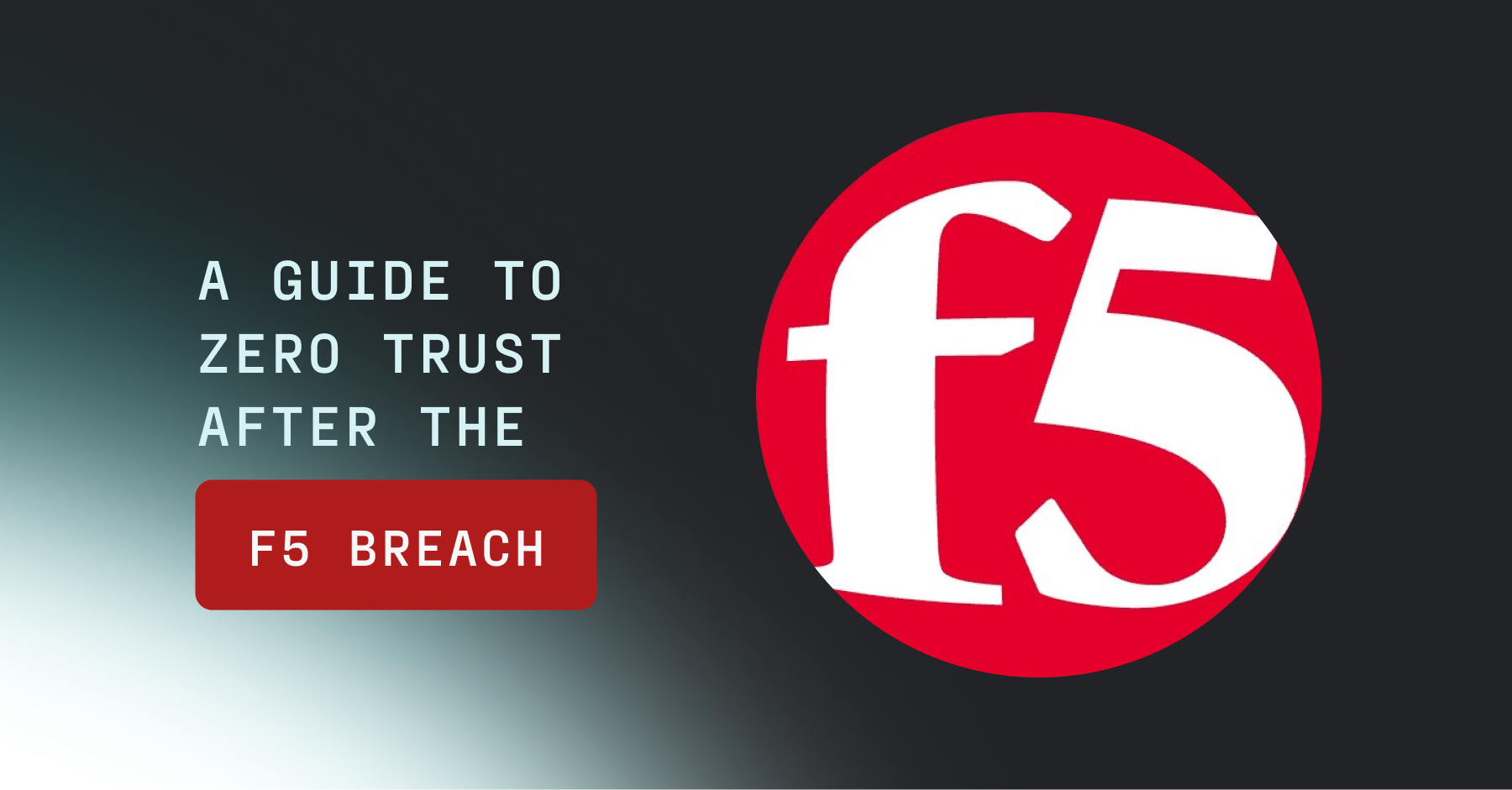
.jpg)
.jpg)
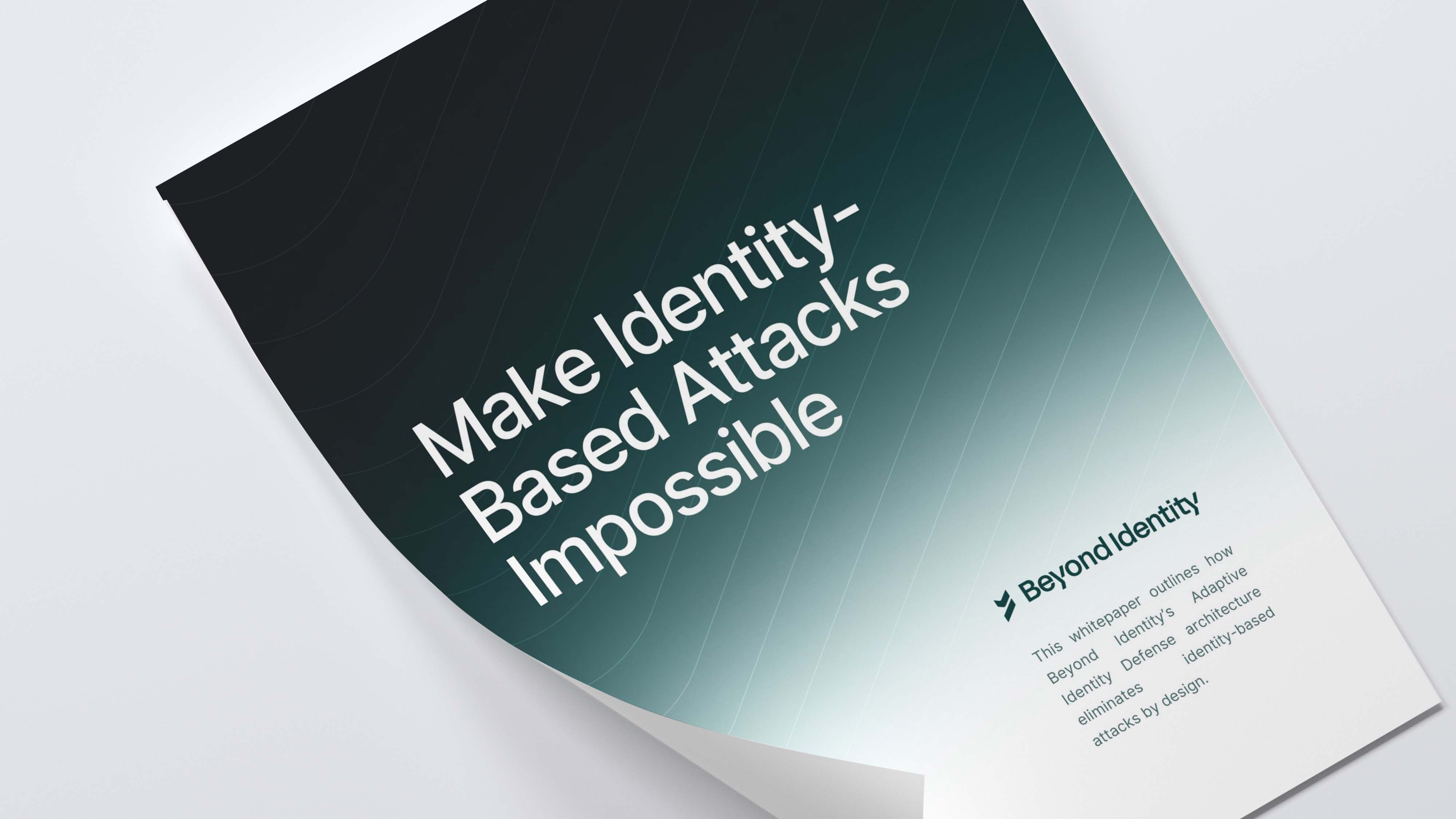
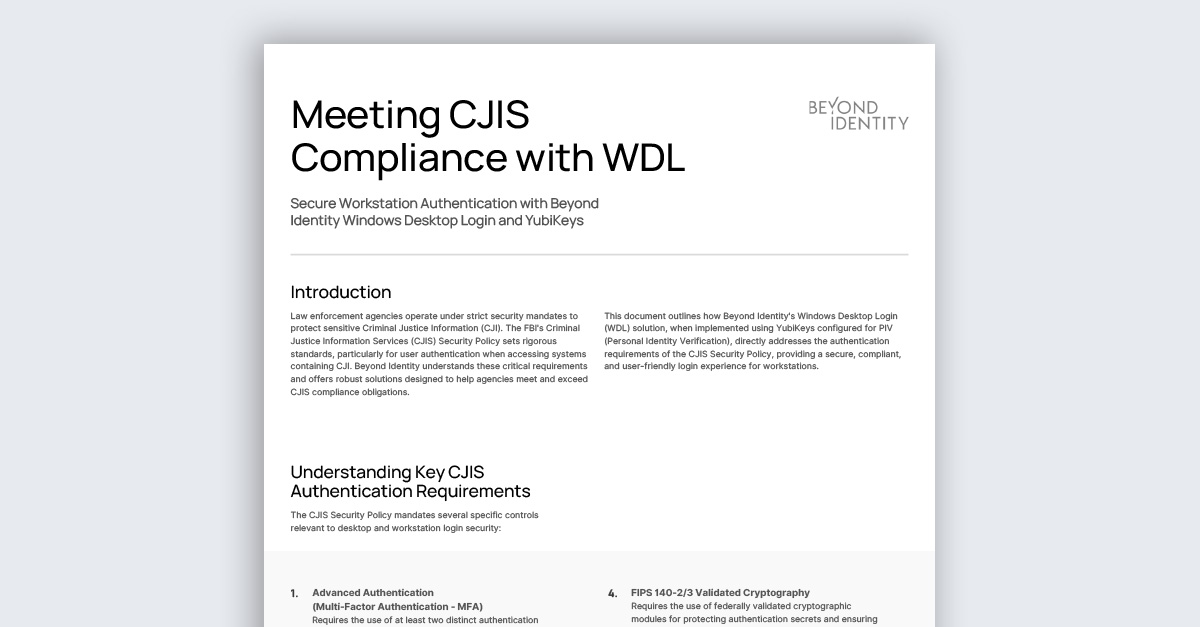
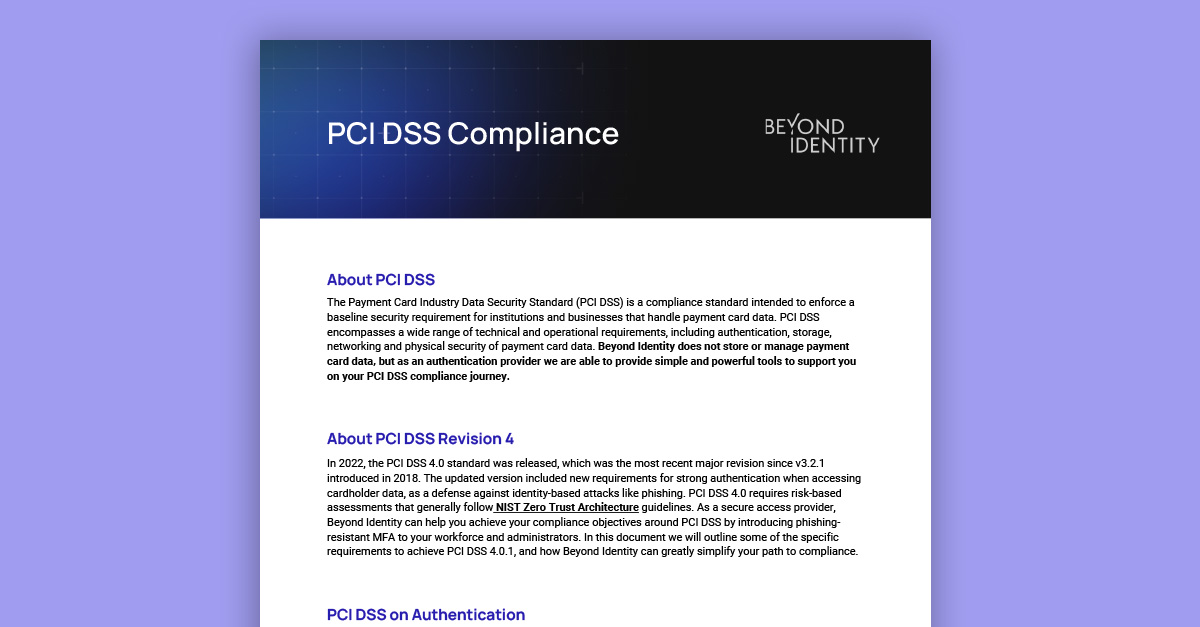
.jpeg)

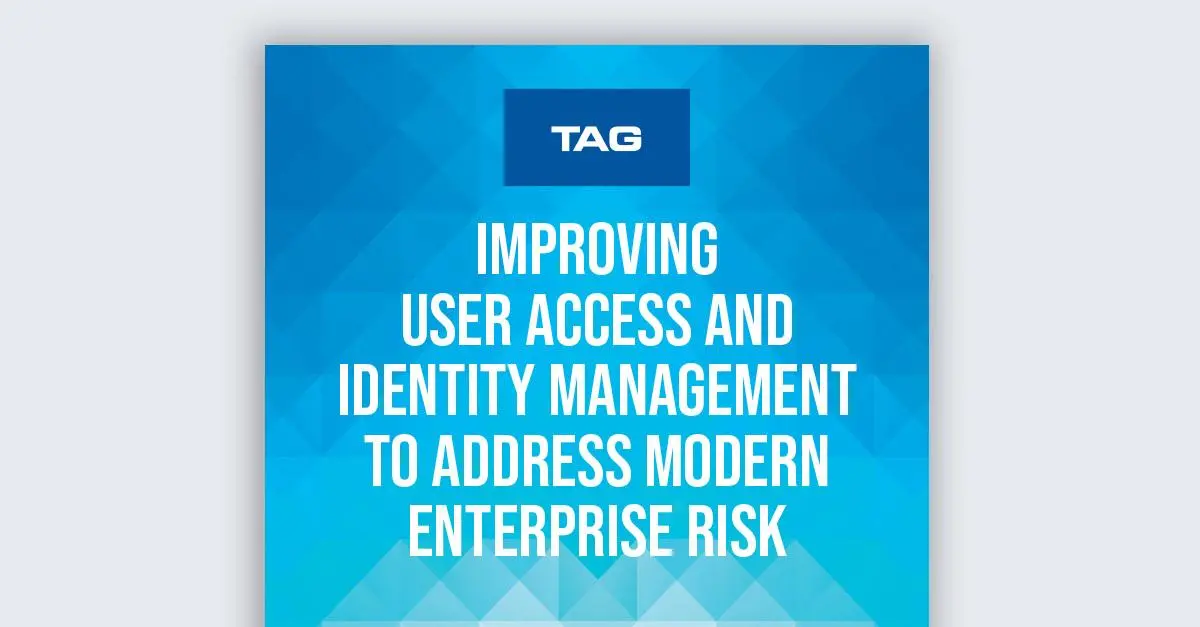
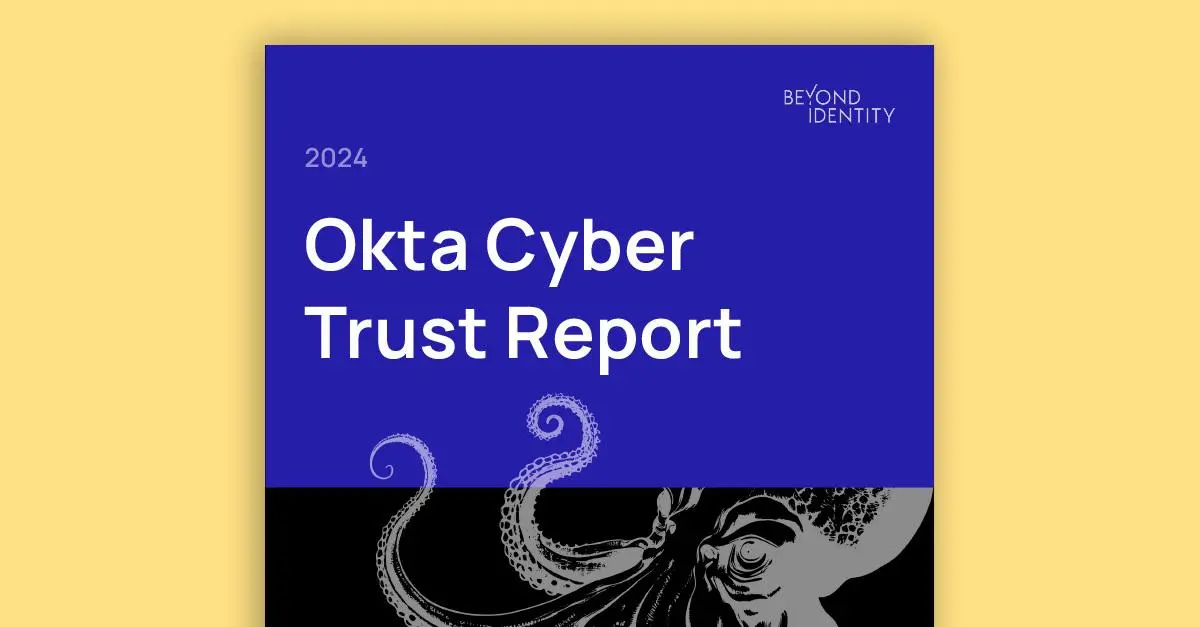



.png)

